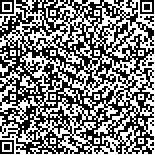| 摘要: |
| 目的 梳理黄淮海地区农作物种植结构的时空特征,发现归纳种植结构演化规律。方法 文章基于2000—2021年黄淮海地区市级层面播种面积数据,综合运用描述统计、丰富度指数、空间相关性检验等方法,总结黄淮海地区农作物种植结构的时空演变特征、规律,并分析原因。结果 (1)黄淮海地区农作物播种面积先减后增再减,空间上“北减南增”,品种上“粮增经减”。(2)近年来,黄淮海地区农作物种植表现出较显著集聚特征,各地小麦种植占比普遍提高,玉米种植向北部集聚,水稻种植集中在安徽、江苏北部,油料种植向山东半岛、河南及河北东北部集聚。棉花、豆类和薯类种植明显萎缩,蔬菜种植布局相对稳定。(3)黄淮海地区农作物种植可分为19种类型,类型丰富度指数先增后减、总体下降。(4)黄淮海地区农作物种植结构变化频繁明显。近年来种植结构类型趋于收敛、空间上逐步集聚。目前,主要分为小麦主导型、小麦—玉米组合型、玉米主导型3种,由南向北呈带状分布。(5)黄淮海地区农作物种植存在空间集聚效应,集聚以高高(H—H)集聚、低低(L—L)集聚为主。结论 黄淮海地区农作物种植受经济、政策、资源等多种因素影响,城镇化进程对种植结构变化有着重要影响,作物种植总体向资源条件更优、生产竞争力较强、品质特色优质的区域集聚。 |
| 关键词: 黄淮海地区 农作物 种植结构 时空演变 空间相关性 |
| DOI:10.7621/cjarrp.1005-9121.20250403 |
| 分类号:F326.1 |
| 基金项目:中国农业科学院农业信息研究所基本科研业务费“基于大数据的国际农产品价格传导、联动与冲击模拟”(JBYW-AII-2023-09);国家自然科学基金面上项目“‘双碳’目标下农户绿色生产行为选择及其全周期生态效率研究”(42271313);国家自然科学基金青年项目“产业集聚、专业化分工与农业生产性服务发展路径研究——来自蔬菜生产专业村的证据”(72103109);中国农业科学院农业信息研究所基本科研业务费“大食物观下大中城市‘菜篮子’产品应急保供机制建立与优化”(JBYW-AII-2023-11);中国气象局气象软科学专项课题“气象服务对农户收入的影响及其机制研究——以特色农业气象服务中心为例”(2024ZXXM05) |
|
| TEMPORAL AND SPATIAL ANALYSIS OF CROP PLANTING STRUCTURE IN THE HUANG-HUAI-HAI REGION |
|
Zhang Zhengjia1,2, Chi Liang1,2, Yang Haicheng3, Shen Chen1,2
|
|
1.Agricultural Information Institute, Chinese Academy of Agricultural Sciences, Beijing 100081, China;2.Key Laboratory of Agricultural Big Data, Ministry of Agriculture and Rural Affairs, Beijing 100081, China;3.Agriculture Trade Promotion Center, Ministry of Agriculture and Rural Affairs, Beijing 100125, China
|
| Abstract: |
| This study aims to systematically analyze the spatiotemporal characteristics of crop planting structure in the Huang-Huai-Hai region and to identify and summarize the evolution patterns of planting structure. The study utilized the crop planting area data at the municipal level in the Huang-Huai-Hai region from 2000 to 2021. Various methods including descriptive statistics, richness index, and spatial correlation analysis were employed to comprehensively summarize the spatiotemporal evolution characteristics and patterns of crop planting structure. Additionally, it analyzed the underlying reasons and logic behind these patterns. The results were listed as follows. (1) The sowing area of various crops in the Huang-Huai-Hai region showed a fluctuating trend, initially decreasing, then increasing, and then decreasing again. Spatially, it exhibited a trend of decreasing in the north and increasing in the south, while at the variety level, there was an increasing trend in grain and a decreasing trend in economic crops. (2) In recent years, crop planting in the Huang-Huai-Hai region had shown significant spatial clustering characteristics. The proportion of wheat planting had generally increased, while corn planting had gradually clustered in the northern part. Rice planting was mainly concentrated in the northern parts of Anhui and Jiangsu, and oilseed planting had gradually clustered in the northeastern parts of the Shandong Peninsula, Henan, and Hebei. Cotton, legumes, potatoes, and other crops had significantly decreased in planting area, while the layout of vegetable planting remained relatively stable. (3) During the study period, crop planting in the Huang-Huai-Hai region could be classified into 19 types, and the richness index showed a trend of initially increasing and then decreasing, resulting in an overall decline. (4) The planting structure of crops in the Huang-Huai-Hai region also demonstrated noticeable fluctuations. In recent years, there had been a reduction in the diversity of planting structures, with a gradual spatial concentration observed. Presently, they could be broadly categorized into three types: wheat-dominated, wheat and corn combination, and corn-dominated, primarily distributed from south to north in a belt-like manner. (5) There was a spatial clustering effect in crop planting in the Huang-Huai-Hai region, with high-high (H-H) clustering and low-low (L-L) clustering as the predominant patterns. Crop planting in the Huang-Huai-Hai region is influenced by various factors such as economic, policy, and resource factors. The urbanization process has a significant impact on the changes in planting structure, with crops tending to cluster in regions with better resource conditions, stronger production competitiveness, and high-quality characteristics. |
| Key words: Huang-Huai-Hai region crops planting structure temporal and spatial evolution spatial correlation |

